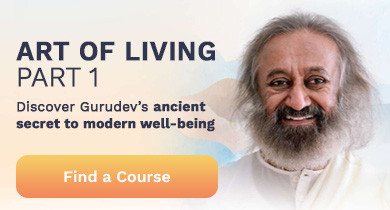By Rachana Yemula | Posted: November 19, 2018
Though she has a job, a good education, and a strong relationship, Amanda, 29, is seriously stressed. In spite of her prestigious university degree, she has an entry-level job and can barely pay her rent. Recently her partner declared he was thinking about quitting his job to attend graduate school. The news sent her into an anxiety spiral, and she had her first panic attack. Her breathing became shallow, her heart began to pound, and her vision dimmed until she almost blacked out.
Amanda is suffering from an extreme case of a phenomenon buried deep in human DNA: the fight-or-flight response. When our ancestors faced danger, such as a predator, an enemy, or a raging river they had to cross to survive—they too experienced an increased pulse and respiration rate, a surge of adrenaline, and other changes in the body designed to energize and protect them.
While an immediate reaction to a threat is a healthy, normal phenomenon, a continuously elevated stress response can lead to a myriad of health problems. Amanda is now aware that the chronic stress she had been under for so long is taking a toll on her health.
What’s really at work here are the sympathetic and parasympathetic nervous systems, which bring the body into and out of balance. Let’s start with the body’s response to stress, which stimulates the sympathetic nervous system (SNS), activating a release of stress hormones (most notably cortisol) and giving a rush of adrenaline-fueled energy for dealing with the stressor. The problem is, the human body can’t withstand a barrage of cortisol for very long. Over time, elevated stress hormones can suppress the immune system, leading to the development of physical and mental problems, and even diseases.
But there’s a good guy in this scenario: the parasympathetic nervous system (PSNS). The hormones released by the PSNS stimulate a host of metabolic processes like digestion, sexual response, and sleep. Scientific evidence has shown how your body responds when the parasympathetic system is engaged: your breaths become deeper and slower, your pulse rate and blood pressure decrease, and your body becomes calm. Taking long deep breaths stimulates the Vagus nerve, moving you into a relaxed state of mind.
Here’s more good news: activating the PSNS is as easy as taking your next breath.
While most benefits of breathwork are realized over time, the act of pausing for a few moments to regulate your breathing can create an immediate sense of relief and relaxation in the body. You may find improvements in your sleep, emotional control, and mental clarity.
Here are a few simple techniques you can try the next time your mind is racing and your heart is pounding.
1. Counting your breaths
Counting your breaths is the simplest form of breath balancing, and the practice has an immediate calming effect.
Find a quiet place to sit. Keeping your back straight but not rigid, close your eyes and take two or three deep, full breaths.
Then, inhale for a count of four, hold your breath for a count of two, and exhale for a count of eight. Keep your breaths even and smooth, and don’t force your breathing in any way.
Inhalation energizes your body and exhalation relaxes your body. As you calm down, your breaths will naturally grow longer and slower. Continue for at least five minutes—or even longer if it feels good!
2. Alternate nostril breathing
In this more advanced form of breath counting, you breathe through one nostril while closing off the other. For this exercise, we’ll use the four-two-eight pattern described above.
Please have a look at this video:
Again, with a straight back and closed eyes, take a few cleansing breaths before beginning. With the index and middle finger of your right hand on your forehead, in between your eyebrows, lightly press your right thumb on your right nostril (the same nostril as the hand you use) and inhale to the count of four through your left nostril.
Hold the breath for two counts as you gently press your ring finger on your left nostril to close it off. Release the thumb from the right nostril and exhale through it for a count of eight.
Now repeat the sequence in reverse: keeping your ring finger pressed against your left nostril, inhale for a count of four through the nostril. Then close it off with your thumb and hold for two counts, then release the left nostril by lifting your ring finger and exhale for a count of eight.
3. Sudarshan Kriya
Sudarshan Kriya involves rhythmic, cyclical breathing patterns that range from slow and calming to rapid and stimulating. In this Kriya, you take control of your breath, which positively affects your immune system, nerves, and psychological concerns.
The Sudarshan Kriya Technique
- Ujjayi (Victorious Breath)
- Bhastrika (Powerful Bellows Breath)
- Om Chant
- Kriya (Purifying and energizing Breath)
A 2009 study published by Harvard Medical School, Sudarshan Kriya yoga can effectively address anxiety and depression. The method is inexpensive and risk-free, and has favorable effects on your mind-body connection. Sudarshan Kriya must be done under the guidance of a certified Art of Living teacher. It is best if pregnant women, those struggling with alcohol or drug abuse, and people suffering from extreme mental illness avoid this Kriya.
Use an app
Try an app to keep you focused. In your app store, search“breathing meditation” or “yoga breath” to find one you like.
Sattva offers some great free and paid content, including a variety of meditations, that are focused on the breath. There are many other apps, like Prana or Calm, that are worth exploring as well.
Staying healthy: There are three important things to keep in mind about our nervous system.
- Downregulate sympathetic nervous system(SNS): Caffeine, activates the sympathetic nervous system that may have cardiovascular risk. Studies are unclear.
- Upregulate parasympathetic nervous system(PSNS): Long slow exhalations and diaphragmatic breathing activates (PSNS)
- Incorporate regular restorative practices: Tai Chi, Qigong, Restorative yoga, breath-focused practice activate (PSNS)
These are just the three of many breathing techniques that are easy to learn, and you can do them anywhere. Try them all! When you need to overcome anxiety and balance your nervous system, they will come to your rescue.
Of course, you should practice common sense whenever you start a new program of working with your body: start with short intervals, gradually increasing as you get more comfortable with the practices. Stop if you feel dizzy or lightheaded. If the feeling persists, consult a healthcare practitioner.
Learn more about using breath as a tool for healing in the Art of Living’s e-course, The Power of Pranayama, part of The Happiness Program.
What's your favorite breathing technique?
Disclaimer: This content is not intended to be a substitute for professional medical advice, diagnosis or treatment. Always seek the advice of your physician or other qualified health provider with any questions you may have regarding a medical condition.
Rachana Yemula, Certified Integrative Nutrition Health Coach, Founder of Wellnessboon.com, Physician, Co-author of Sleep Problems in Children and Young People, Yogi and meditator.



























